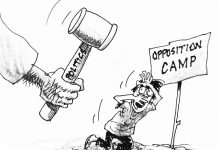I may be more than 4 decades now working with the agriculture sevtor, however, I can poignantly say that our farmers are the most hardworking people in the face of the earth. But through all these years, I’m still baffled by the very slow pace of countryside development when we have the most workaholic persons yet they cannot do so much to uplift their own socio-economic condition.
In this article, I will attempt to dissect what is truly happening to our food heroes.
A typical day for a Filipino farmer starts early, around 4:00-5:00 AM, with chores such as tending to rice fields, coconut plantations, or vegetable gardens. Men usually focus on farming or fishing, while women handle household tasks, childcare, and sometimes assist with farmwork.
Among others, their daily routine consist of the following:
• Morning Chores: Farmers begin by feeding animals, watering crops, and preparing for the day’s work.
• Farmwork: They spend most of their day tending to crops like rice, corn, coconut, sugarcane, and vegetables, or working on livestock like pigs, chickens, and carabaos (water buffalo).
• Afternoon Break: After a long morning of work, farmers take a break to rest and eat lunch, often consisting of simple meals like rice with vegetables or fish.
• Evening Routine: After finishing work, farmers might spend time with family, watch TV, or socialize with neighbors. Women often continue with household chores or part-time jobs.
Challenges Faced by Filipino Farmers:
• Low Income: Many farmers struggle with poverty due to low prices for their products, high production costs, and limited access to credit and markets.
• Limited Access to Resources: Farmers often lack access to quality seeds, fertilizers, and equipment, making it harder to increase productivity and income.
• Climate Change: Rising temperatures, droughts, and floods affect crop yields and farming schedules, making it challenging for farmers to plan and adapt.
• Landlessness: Some farmers face land ownership issues, with many working on small plots of land or as tenants, which can limit their ability to invest in their farms.
• Government Neglect: Historically, the agricultural sector has received limited support, leading to persistent poverty and limited opportunities for farmers.
But I would like to qualify the aforesaid statement considering that in the recent years, and in fairness to the national government, fund allocations for agricultural development programs continue to rise. Meaning, countless program interventions have poured in year in and year out, funded in Million of Pesos by the government. But at the end of the day, it could hardly create a dent of progress to the overall state of Philippine Agriculture.
If asked what are their Aspirations as farmers, most likely their answers would run like these:
• Land Ownership: Many farmers dream of owning the land they till, which would give them more control over their crops and income.
• Better Income: Farmers aspire to earn a stable and sufficient income to support their families and improve their quality of life.
• Sustainable Livelihood: They hope for a sustainable source of income, perhaps through diversification or value-added products, to reduce dependence on a single crop.
Due to our limited space, I promise, in the next issue of my column “Sow and Till” we will dig deeper into this problem. Or probably explore some possibilities that the farmers and other agristakeholders need to do – to better address the problems in the best way possible.
So, to our dear readers, pls. standby and watch out for the Part 2 on the next issue concerning specifically on this topic. Bye for now!




